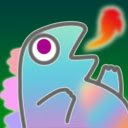先日の福島訪問そして渡邊先生主催の「鯉アートプロジェクト」報告を米国美術教育協会(NAEA:National Art Education Association) の隔月新聞のコラム(USSEA:United States for Education through Art)に記載。下記ご参照の程。
A Therapeutic Koi-art Project for children in Fukushima, Japan
Masami Toku
USSEA Child Art Exhibit Director
California State University, Chico
(Figure 1: Koi Proejct for children who are evacuated from nuclear plant crisis in Fukushima)
One week after the tragedy happened in Japan, I sent out the following message to my colleagues in Chico, California on March 18, for the development of a fund-raising event.
“As you already might know, Japan (Tohoku region – North part) suffered a big earthquake (M9) and tsunami on March 11. More than 18,000 people passed away and are missing so far. Thank you so much for your many messages. All my family and relatives are living in the central and southern part of Japan and they are okay. But I have many friends around the area and am still waiting for contact from them since it happened ... Some of you might remember my friend, Prof. Koichi Watanabe who came to participate in the first cultural event of the Way of Asia in 2008 to organize his art show and give his talk. He is from the area, Fukushima, of the nuclear plant crisis. Since the earthquake, he has been having a tough time contacting survivors, and he will be finally able to evacuate from the Fukushima area after the final meeting on Saturday, 4/19. He is one example of what my Japanese colleagues are doing in response to the disaster. I would like to do something for them and to do so, I need your HELP.”
This is just one example of many fund-raising projects in the USA for those Japanese who suffered from the natural disasters of earthquake and tsunami. People could not believe that this happened in Japan, the country best prepared for those types of disaster due to their past experiences. But it happened, and more surprisingly, it was one of the worst disasters in Japanese history with more than 27,000 lost lives.
After the event, I flew to Japan to visit Fukushima and observe the art project by Koichi Watanabe, an artist and art educator, at Fukushima University, Japan. Watanabe was organizing an art project for those children who suffered and continue to suffer from the disaster. He calls it the “Koi-art project.” It was an urgent therapeutic art project.
There are two Koi projects: one is a collaborative project to make a gigantic Koi (carp), each scale created by an individual, then combined to make one Koi (see figure 1 above: a gigantic collaborative Koi displayed in the public gym that serves as a temporary shelter for those evacuated from Fukushima).
The other is a call for artwork from all over the world for a single small Koi created and designed by each individual such as children and adults including artists and educators for hope and support.
(See figure 2: Yoshiomo Nara, an artist, and college students in Fukushima University who checked the artworks from Switzerland, and figure 3: Toku is creating a Koi when she visited Fukushima University)
The purpose of the project was to heal children through a kind of therapeutic art project. The Koi (carp), is a symbol of strength and a metaphor of hope; the fish swim again the current and go beyond obstacles to survive and thrive in this world.
I visited Japan to observe the current situation and the project itself in Fukushima on April 24, 2011. I asked where the idea came from, and Watanabe responded that he felt the necessity to give those refugee children an art project to have them focus on making something more positive, rather than focusing on the nuclear power crisis and its invisible & endless fear. It was also helpful to make a colorful display in a colorless refugee area
(see figure 4 above: white cardboard spaces in a public city gym) and the town of Fukushima.
(see figure 5: the Koi(s) are displayed in town starting from the 1st of May)
The 5th of May is a national holiday called Children’s Day, and there is a custom to display a family of Koi wind socks, representing our (adults’) hopes for children to grow physically and mentally healthy. Watanabe, who himself has suffered from this tragic event in Fukushima, also hopes this project will encourage those children to persevere in this tragedy. The call for artwork still continues and we hope many Koi will come from the US as well.
Subscribe to:
Post Comments (Atom)


No comments:
Post a Comment